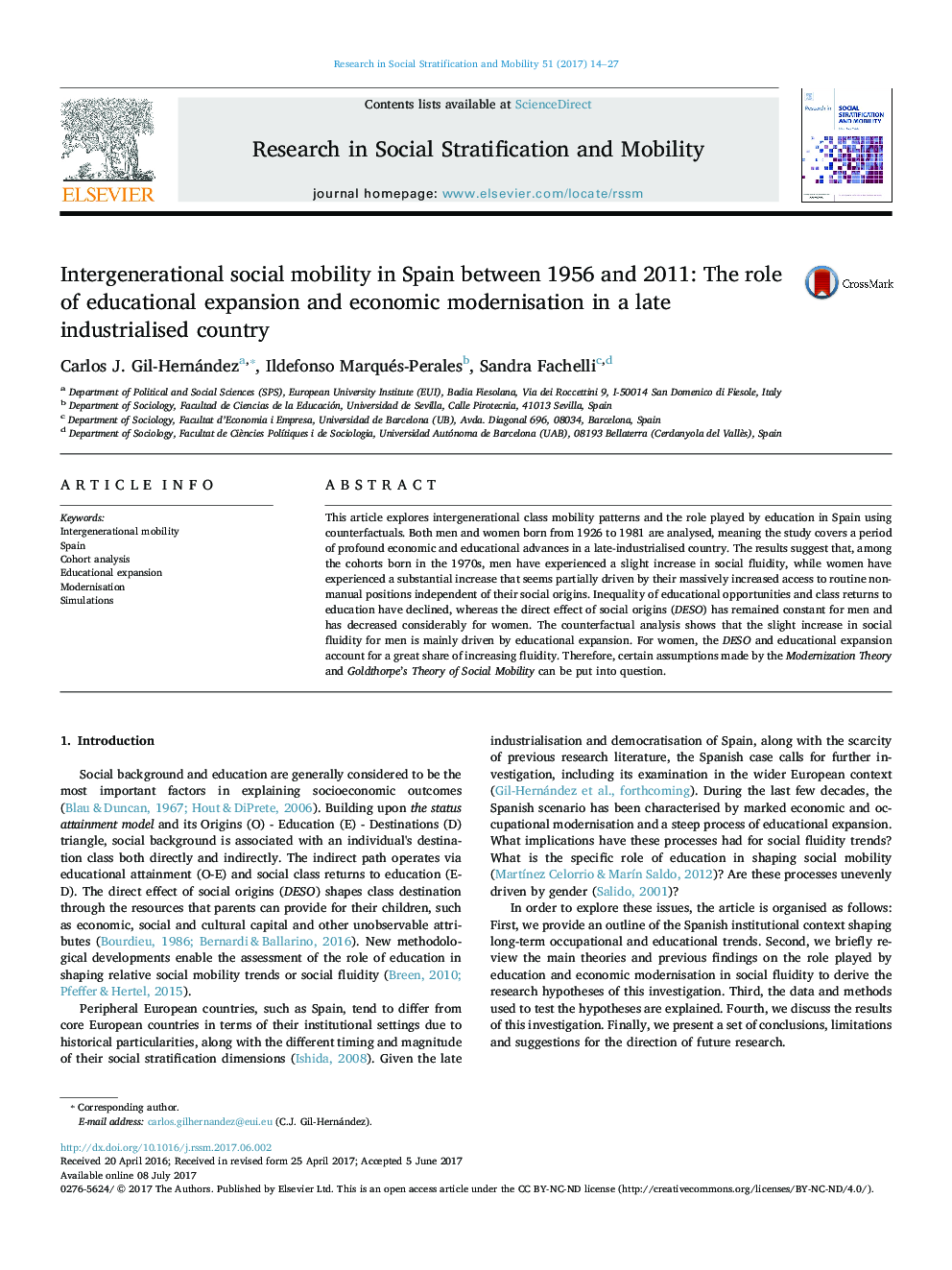| Article ID | Journal | Published Year | Pages | File Type |
|---|---|---|---|---|
| 5106586 | Research in Social Stratification and Mobility | 2017 | 14 Pages |
â¢There is a steep increase in social fluidity in the cohort of women born in the 1970s.â¢Men show high reproduction, slightly improving fluidity in the youngest cohort.â¢Women's fluidity growth is partially driven by massive access into non-manual classes.â¢The counterfactual analysis shows that social fluidity change is mainly channelled through educational expansion.â¢The Modernisation Theory and Goldthorpe's Theory of Social Mobility are put into question.
This article explores intergenerational class mobility patterns and the role played by education in Spain using counterfactuals. Both men and women born from 1926 to 1981 are analysed, meaning the study covers a period of profound economic and educational advances in a late-industrialised country. The results suggest that, among the cohorts born in the 1970s, men have experienced a slight increase in social fluidity, while women have experienced a substantial increase that seems partially driven by their massively increased access to routine non-manual positions independent of their social origins. Inequality of educational opportunities and class returns to education have declined, whereas the direct effect of social origins (DESO) has remained constant for men and has decreased considerably for women. The counterfactual analysis shows that the slight increase in social fluidity for men is mainly driven by educational expansion. For women, the DESO and educational expansion account for a great share of increasing fluidity. Therefore, certain assumptions made by the Modernization Theory and Goldthorpe's Theory of Social Mobility can be put into question.
